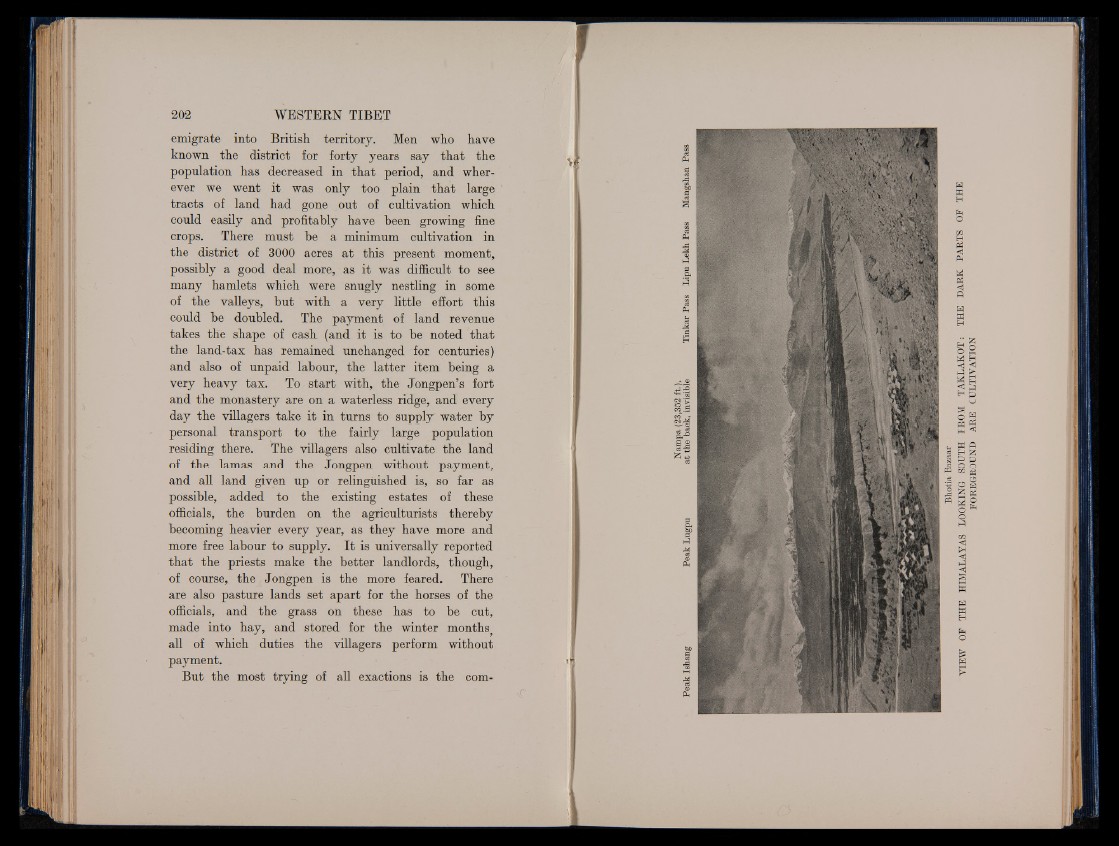
emigrate into British, territory. Men who have
known the district for forty years say that the
population has decreased in that period, and wherever
we went it was only too plain that large
tracts of land had gone out of cultivation which
could easily and profitably have been growing fine
crops. There must be a minimum cultivation in
the district of 3000 acres at this present moment,
possibly a good deal more, as it was difficult to see
many hamlets which were snugly nestling in some
of the valleys, hut with a very little effort this
could be doubled. The payment of land revenue
takes the shape of cash (and it is to he noted that
the land-tax has remained unchanged for centuries)
and also of unpaid labour, the latter item being a
very heavy tax. To start with, the Jongpen’s fort
and the monastery are on a waterless ridge, and every
day the villagers take it in turns to supply water by
personal transport to the fairly large population
residing there. The villagers also cultivate the land
of the lamas and the Jongpen without payment,
and all land given up or relingiiished is, so far as
possible, added to the existing estates of these
officials, the burden on the agriculturists thereby
becoming heavier every year, as they have more and
more free labour to supply. I t is universally reported
that the priests make the better landlords, though,
of course, the Jongpen is the more feared. There
are also pasture lands set apart for the horses of the
officials, and the grass on these has to be cut,
made into hay, and stored for the winter months
all of which duties the villagers perform without
payment.
But the most trying of all exactions is the com-
I